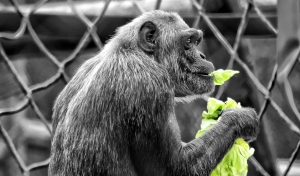
The Punjab Wildlife Department is mulling over recreating these successes in other zoos, wildlife parks, and breeding centres across the province.
Over the past six years, a total of 2,949 animals have been born at the zoo since 2013. Of these, 2,432 were birds, and 517 were other animals, while 1,025 animals died during that period, including 794 birds, lions, giraffes, and the zoo’s only female elephant, Suzi.
At least 435 birds and 112 other animals were born in the zoo in 2017, while 634 birds and 110 other animals were born in 2018. Some 206 birds and 76 other animals died in 2017, while 122 birds and 45 other animals died in 2018.
According to Lahore Zoo Veterinary Officer Dr Rizwan Khan, most of the animals that died were very old or had contracted incurable diseases. He said that deaths caused by extreme weather conditions and preventable diseases have been reduced to a great extent.
18 big cats welcomed at Lahore’s zoos
Dr Rizwan explained that he consulted with wildlife and veterinary experts before taking a few steps to control the death rates, adding that the results have been satisfactory.
Earlier, he said, the floors around chicks were covered with sand. The sand particles would go in the birds’ eyes and cause infections, often resulting in death. “Now we use rice hulls instead of sand,” he shared.
The birds have also been put on a rigorous vaccination schedule for protection against fatal diseases and parasites. They are kept in climate-controlled conditions for a month from their day of birth to prepare their bodies for the outdoors.
Dr Rizwan said that the herbivorous animals are vaccinated every three months for protection against stomach bugs and every two months for blood dysentery, while in the monsoon, vaccination is done every month. Besides, their feed is supplemented with necessary vitamins. He said a team of interns prepares 24-hour charts for the monitoring of all animals.
The zoo has also had significant success maintaining Urial deer fawns. During the last few months, more than 10 fawns brought from the Salt Range region have been growing at the zoo for the past few months and were recently shifted to their pens.
Dr Warda Gill, another veterinarian at Lahore Zoo, explained that the survival rate of Urial has increased because they are closely monitored and given customised feed. “Every fawn is given feed according to its weight and health, and they are being properly vaccinated,” she said, adding that this is why the fawns are well-nourished and healthy.
Punjab Wildlife Honourary Game Warden Badar Munir has proposed similar protocols across the province so that the fatality rate of birds and animals can be reduced. He said it will be convenient as no extra funds are needed for implementing the set protocols. He added that the zoo is now giving preference to need-based training and refresher courses for staff.
Published in The Express Tribune, August 7th, 2019.















1710998259-0/pti-(1)1710998259-0-270x192.webp)



















COMMENTS
Comments are moderated and generally will be posted if they are on-topic and not abusive.
For more information, please see our Comments FAQ